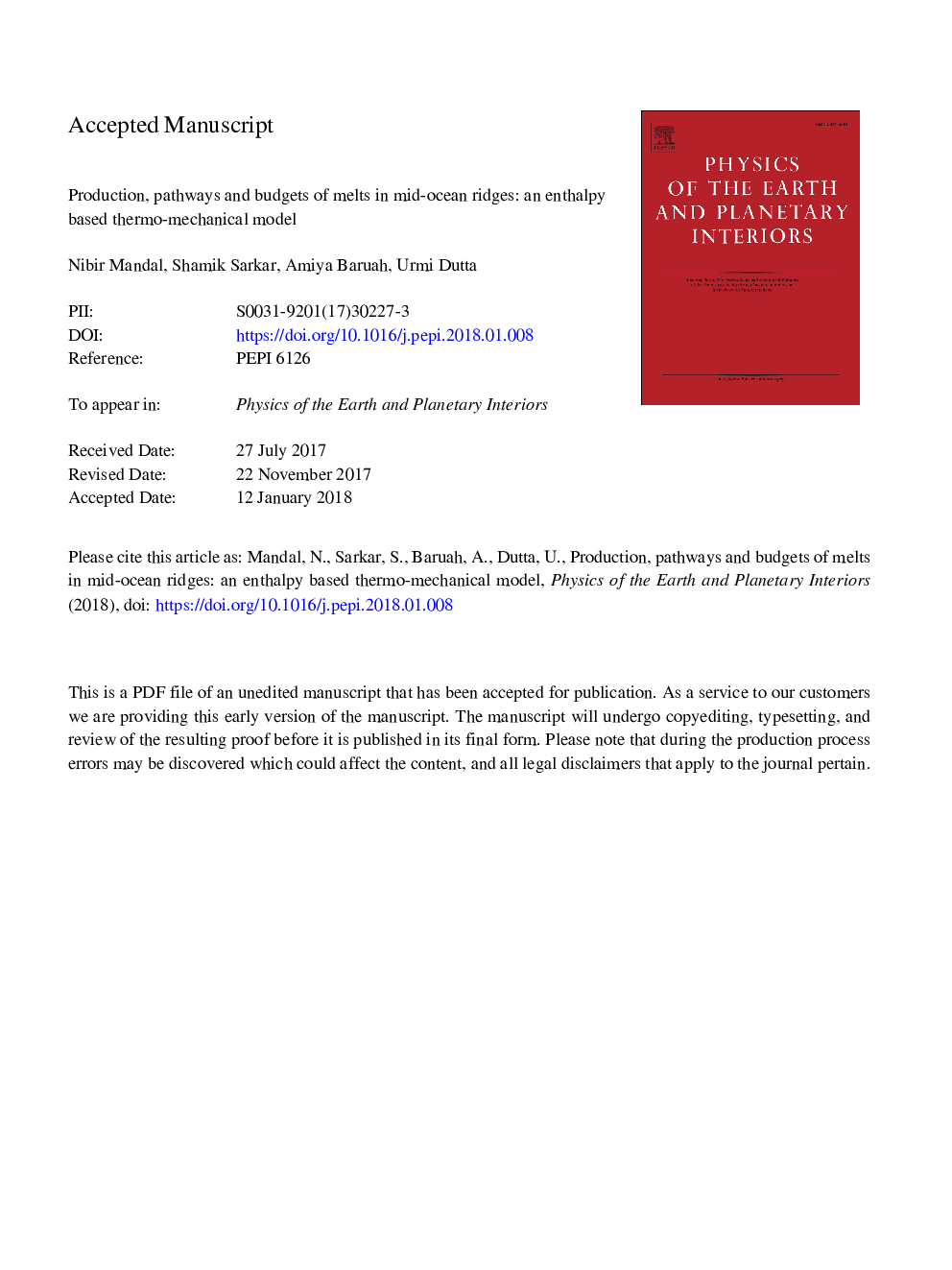| Article ID | Journal | Published Year | Pages | File Type |
|---|---|---|---|---|
| 8915710 | Physics of the Earth and Planetary Interiors | 2018 | 54 Pages |
Abstract
Using an enthalpy based thermo-mechanical model we provide a theoretical evaluation of melt production beneath mid-ocean ridges (MORs), and demonstrate how the melts subsequently develop their pathways to sustain the major ridge processes. Our model employs a Darcy idealization of the two-phase (solid-melt) system, accounting enthalpy (ÎH) as a function of temperature dependent liquid fraction (Ï). Random thermal perturbations imposed in this model set in local convection that drive melts to flow through porosity controlled pathways with a typical mushroom-like 3D structure. We present across- and along-MOR axis model profiles to show the mode of occurrence of melt-rich zones within mushy regions, connected to deeper sources by single or multiple feeders. The upwelling of melts experiences two synchronous processes: 1) solidification-accretion, and 2) eruption, retaining a large melt fraction in the framework of mantle dynamics. Using a bifurcation analysis we determine the threshold condition for melt eruption, and estimate the potential volumes of eruptible melts (â¼3.7â¯Ãâ¯106â¯m3/yr) and sub-crustal solidified masses (â¼1-8.8â¯Ãâ¯106â¯m3/yr) on an axis length of 500â¯km. The solidification process far dominates over the eruption process in the initial phase, but declines rapidly on a time scale (t) of 1â¯Myr. Consequently, the eruption rate takes over the solidification rate, but attains nearly a steady value as tâ¯>â¯1.5â¯Myr. We finally present a melt budget, where a maximum of â¼5% of the total upwelling melt volume is available for eruption, whereas â¼19% for deeper level solidification; the rest continue to participate in the sub-crustal processes.
Keywords
Related Topics
Physical Sciences and Engineering
Earth and Planetary Sciences
Geophysics
Authors
Nibir Mandal, Shamik Sarkar, Amiya Baruah, Urmi Dutta,
